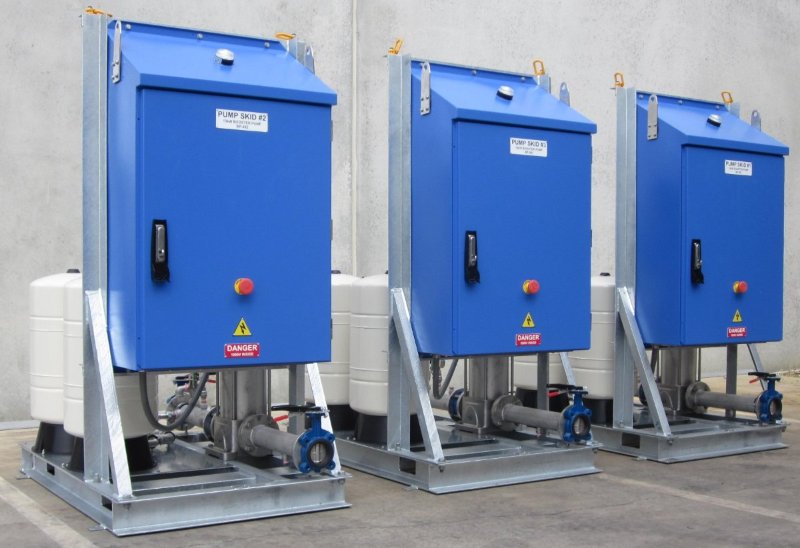
SCHECULE : 1 - 3 Maret 2018
VENUE : Swiss Belinn Malang
DURATION : 1- 3 days
Course Introduction:
In selecting a process pump, especially for the petroleum and petrochemical industries one must look beyond the immediate need of merely satisfying the stated process parameter requirements. The unit, pump and driver, has to be fully integrated in the process system. Over its entire life cycle the unit has to provide a reliable and economic service, in safety, with full respect to the environmental protection, operability, maintainability and plant availability requirements with specific reference to the local requirements and prevailing conditions. The tendency to ensure that the normal operating conditions are satisfied and to neglect abnormal, emergency start up and shut down conditions can give rise to unwelcome, even on occasions, critical situations. Success in optimizing the selection requires the application of the correct engineering concepts in conjunction with the full understanding of practical requirements and implications. These five days course covers process pump design, pump technology and characteristics, malfunction, specification and selection.
Course Objectives:
Upon successful completion of this course, the delegates will be able to:
- Gain a thorough understanding of the operating characteristics of reciprocating, rotary, and centrifugal pumps
- Learn in detail all the diagnostic techniques and inspections required of critical components of reciprocating, rotary, and centrifugal pumps
- Understand thoroughly all the tests required for the various types of reciprocating, rotary, and centrifugal pumps
- Determine all the maintenance and troubleshooting activities required to minimize the downtime and operating cost of reciprocating, rotary, and centrifugal pumps
- Gain a detailed understanding of the various methods used to repair and refurbish reciprocating, rotary, and centrifugal pumps
- Learn the various methods used to maximize the efficiency, reliability, and longevity of reciprocating, rotary, and centrifugal pumps
- Gain a detailed understanding of all the calculations and sizing techniques used for reciprocating, rotary, and centrifugal pumps
Who Should Attend?
This course is suitable for practicing engineers in projects, equipment specification, selection, evaluation, reliability, inspection, process and maintenance functions and those undergoing training find the course very interesting and extremely useful. Supervisors find the course of great benefit. The concepts are clearly explained using color diagrams and images or graphs and simple equation
Course Outline:
Introductory
- Equipment in service
- Equipment Selection
- Equipment Failure
- Pump Types
- Centrifugal Pumps
- Regenerative Pumps
- Partial Emission Pumps
- Positive Displacement Pumps
Centrifugal Pump Design and Technology
- Partial Emission Pumps
- Regenerative Pumps
- Centrifugal Pump – Typical Flow Paths
- Centrifugal Pump Impellers
- Impeller and Casing Function
- Centrifugal Pump Casings
- Multistage Pumps
- End Suction Overhang Pumps
- API Pumps
- Magnetic Drive Centrifugal
- Close Doubled Seal-less
- Double Suction Centrifugals
- Multistage Centrifugals
- Heavy Duty Pumps
- Vertical Pumps
- Dry Pit Vertical Pumps
- Wet Pit Vertical Pumps
- Vertical Turbine Barrel Pumps
- Vertical Wet Pit Volute Pumps
- Vertical Wet Pit Propeller Pumps
Centrifugal Pump Performance
- Main Operating Parameters
- Composite Performance Charts
- Pump Efficiency
- Affinity Laws
- Impeller Trim Correction Chart
- Low and High Speed Pump Rotors
- Affinity Laws – Case Studies
- Specific Speed
- Pump Efficiency and Specific Speed
- Specific Speed – Examples
- Suction Specific Speed
- Head Capacity Characteristics
- Head Capacity and Impeller Features
- Power Capacity Characteristics
- Valve Positions When Starting Pumps
- Efficiency Capacity Characteristics
- Axial Pump Characteristics
- Variable Pitch for Axial Pumps
- Performance with Viscous Liquids
- Viscous Performance Correction
- Viscous Flow – Case Studies
- Controlling Pump Flow
- Discharge Throttling
- Pump Head Considerations
- Determining the Necessary Pump Head
- Controlling Flow by Speed Regulation
- Adjustable Vane Regulation for Axials
- Pumps in Parallel
- Pumps in Series
- Cavitation
- Net Positive Suction Head
- Normal Cavitation
- Evolved Gas Cavitation
- Re-circulation Cavitation
- Tendency for Re-circulation Cavitation
- Cavitation Damage
- Cavitation Free Relationship
- Avoiding Cavitation
- Axial Thrust
- Axial Thrust Balancing Devices
- Axial Thrust in Axial Flow Pumps
- Radial Thrust
- Temperature Rise at Low Pump Flow
- Operation Away Form the Best Efficiency
- Increasing Pump Performance
- Performance Deterioration
- Increased Internal Wear ring Clearances
- Internal Leakage Loss
- External Leakage Loss
- Pump Malfunction
- Hydraulic Malfunction Diagnostics
- Mechanical Malfunction – Vibrations
- Malfunction due to External Influences
- Self Priming Centrifugal Pumps
- Positive Displacement Pumps (PDPs)
- PDP Types
- PDP Performance
- Flow Related to PDPs
- PDP Principles
- PDP Pressure Pulsations
- Pulsation Dampeners
- Reciprocating Pump Valves
- Valve Slippage
- Positive Displacement Metering Pumps
- Capacity Adjustment Mechanisms
- Diaphragm Pumps
- Specifying Metering Pumps
- Mechanical Shaft Seals
- Popular Design Versions
- Balanced Mechanical Seals
- Double Mechanical Seals
- Auxiliary Features
- Controlling Seal Temperature
- Sealing Liquids with Abrasives
- Possible Leakage Paths
- Pump Specification and Selection
- Basic Selection Principles
- Standard Requirements
- Iterative Selection Process
- Pump and System Integration
- The Decision Making Process
- Degree of Risk
- Reliability Classification
- Choice of the Number of Pumps
- Pump Head Margins
- Pump Operating Ranges
- Pump Type and Speed
- Effect of Viscosity
- Effect of Suspended Particles
- Entrained Gas
- Priming
- Specific Speed Nomogram
- Cavitation
- Pump Vibrations
- Rotor Frequency Response
- Centrifugal Pump Materials
- API Materials Classes
- Pump Data Sheet
- Case Studies
- Group Exercises
- Group Discussions
- Course Evaluation
- Course Summary





